#SOLARPANELS
Explore tagged Tumblr posts
Text
#SolarEnergy#RenewableEnergy#GoSolar#CleanEnergy#SolarPower#Sustainability#GreenEnergy#SolarPanel#EnergyEfficiency#SolarInstallation#SaveEnergy#SolarPanels#SolarPV#ClimateAction#SolarSystem#SolarSolutions#SolarElectric#CleanTech#SolarInnovation#HomeSolar
2 notes
·
View notes
Text

"Harnessing Sunshine: The Bright Future of Solar Panels"
"Go solar today and lower your bills while raising your sunshine meter! ☀️ Manishaas InfraTecho Solutions Private Limited offers solar panel systems that can help you save money and reduce your environmental impact." Contact us today to learn more!
#interiors#gosolartoday#solarbenefits#solarpanelcleaning#solarpanels#onlinepanel#solaronline#solarpanelbenefits#solarpowerplant#renewableenergy♻️#sustainability#cleanenergynow#ecofriendly#greenliving#sustainablehomedecor#savetheplanetearth#explore#ᴇxᴘʟᴏʀᴇᴘᴀɢᴇ✨
2 notes
·
View notes
Text

#solarpanel#solarenergy#solar#solarpower#solarpanels#renewableenergy#solarsystem#solarpowered#energy#solarpv#solarinstallation#solarcell#renewables#renewable#environment#sustainableenergy#energiasolar
2 notes
·
View notes
Text
GREEN SILENT MEGACITIES
Finally my text about the ideal world is finished :)
Eindelijk mijn tekst over de ideale wereld is klaar :)

ENGLISH: GREEN SILENT MEGACITIES
Google Docs: https://drive.google.com/file/d/1s00cWTNdMhJkwIH5-B8hCY4ep4iO0fkC/view?usp=sharing
Archive: https://archive.org/details/future-world_202401
Onedrive: https://1drv.ms/b/s!AtUIwBUOISOWaegx6xOty719agY?e=Asg1OY
NEDERLANDS: GROENE STILLE MEGASTEDEN
Google Docs: https://drive.google.com/file/d/1zbDNrDfJfSFugLKqA3Ig2WgbUOdDVJh0/view?usp=sharing
Archive: https://archive.org/details/future-world-dutch
Onedrive: https://1drv.ms/b/s!AtUIwBUOISOWaoU4nAAaWEQqVpA?e=ZpPu5S
#solarpunk#hopepunk#solarpanels#art#nederlands#dutch#life#english#kunst#writing#love#green#eco#ecopunk#punk#future#ecology#arcology#architecture#design#toekomst#drawing
6 notes
·
View notes
Text
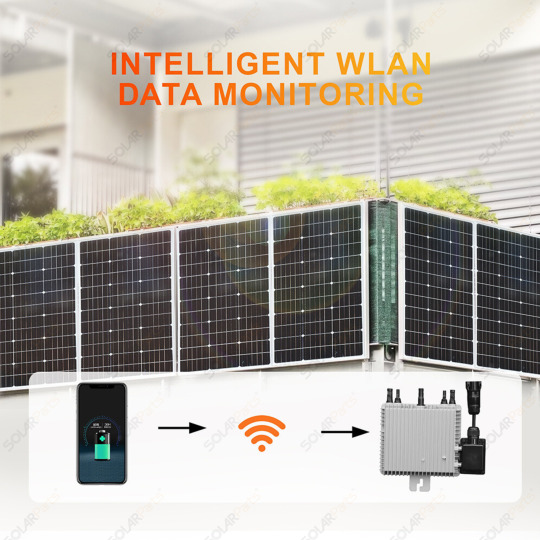

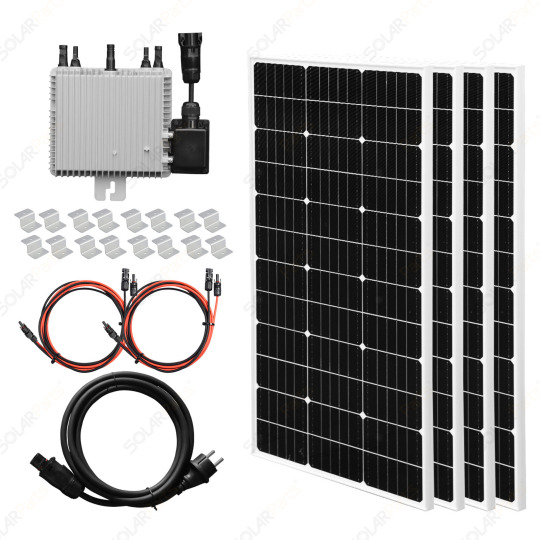
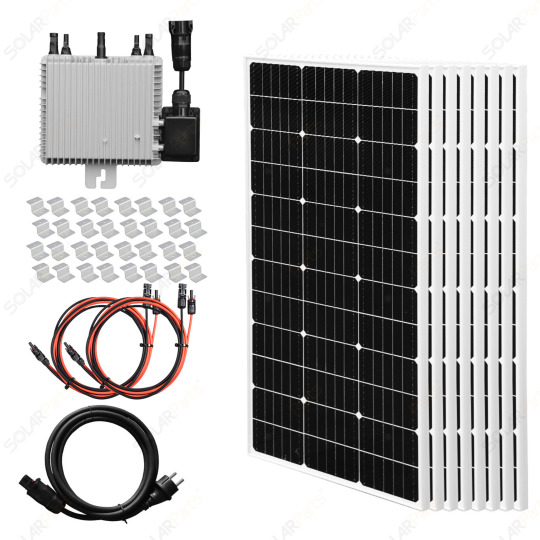
SOLARPARTS 400watts 800watts small balcony garden solar system on gird tied micro inverter
#SolarPanels#SolarEnergySystem#PortablePowerStations#solarforhome#solarpanelinstallationcost#Customization#ongirdtiedmicroinverter#wifi#solar energy#solarparts#energiasolare#energíasolar#solar power#énergiesolaire#solarenergy#energiasolar#太陽能
3 notes
·
View notes
Text
Optimizing Your Solar System Year-Round
As the Earth tilts and turns, the changing seasons can have a profound effect on the performance of solar power systems. From the height of summer to the depths of winter, a solar panel owner’s strategy must adapt to ensure their system is optimized throughout the year. Let's take a closer look into how each season affects solar output and how you can maximize your system's efficiency, regardless of the weather.
Summer: Sun’s Out, Panels Out
Summer often means longer days and more direct sunlight, which is excellent news for solar energy production. In the United States, the average solar panel efficiency can climb during these months due to increased insolation – a term that refers to the amount of solar radiation reaching a given area. The Solar Energy Industries Association (SEIA) reports that in peak summer, a well-positioned solar panel system can produce twice as much energy as during winter. However, extreme heat can sometimes decrease panel efficiency, a phenomenon known as temperature coefficient, typically resulting in a performance drop of about 0.5% for every 1°C above 25°C.
Fall: Preparing for the Pivot
As fall approaches, the sun’s angle begins to lower, and days get shorter, which can lead to a decrease in solar production. Despite this, cooler temperatures can enhance panel efficiency, slightly offsetting the loss from reduced daylight. It’s essential to prepare for leaf fall during this season, as debris can obstruct panels and impact performance. A National Renewable Energy Laboratory (NREL) study suggests that a single leaf on a panel can reduce power output by up to 10%.
Winter: Weathering the Cold
Contrary to what many assume, solar panels don't go dormant in winter. They can still produce significant energy, especially in areas with strong winter sunlight. Snow can even act like a mirror, reflecting light and potentially increasing performance on clear days. The key statistic to watch, however, is daylight hours. For instance, according to the U.S. Energy Information Administration (EIA), regions like the Pacific Northwest see a reduction of about 40% in solar radiation from November through February, affecting potential output.
Spring: A Time for Tune-Ups
Spring is often seen as a time of renewal, and for solar panel systems, it's an ideal period for maintenance to optimize energy capture. As days lengthen, your solar system's production will naturally increase. To fully capitalize on this, ensure your system is free from the winter’s accumulation of dirt and debris. Data from the Department of Energy indicates that a clean solar panel is approximately 21% more efficient than one covered in the season’s grime.
Year-Round Maintenance and Monitoring
Regular maintenance is crucial for keeping your solar power system at peak performance. It’s advisable to check your system's output against benchmarks provided by your installer or local averages. Most modern systems come with apps or monitoring software, enabling you to track energy production in real-time and notice any significant discrepancies that may indicate an issue.
Utilizing Battery Storage
To truly optimize your system year-round, consider integrating battery storage. This allows you to capture excess energy during peak production times and use it when the sun isn’t shining. For example, Tesla’s Powerwall reports that, when used effectively, battery storage can increase the self-consumption of solar power from 30% to upwards of 70%.
Embracing Energy Efficiency
Lastly, optimizing a solar system isn’t just about maximizing production; it’s also about minimizing consumption. Implementing energy efficiency measures within your home can significantly impact how much solar power you need to meet your energy demands. The EPA suggests that for every kilowatt-hour of solar energy used efficiently, a typical system’s return on investment can improve by 5-10%.
By understanding and adapting to the seasonal shifts in solar production, you can ensure your system is not only effective but also contributes to a sustainable future all year round. Whether you’re dealing with the abundance of summer sun or the scarcity of winter light, these strategies will help you stay powered through every season.
#solarpanels#solar#solarenergy#photovoltaics#solartechnology#renewables#sustainability#greenenergy#cleanenergy#residentialsolar#solarathome#energyefficiency#solarroi
4 notes
·
View notes
Text
#flexiblesolarpanel#solarpower#flexiblesolarpanelmarket#solarinverters#solarcontroller#solarsystem#solarsystems#nicesolar#cheepsolarpower#goodsolar#foryou#flexiblesolar#teejoinsolar#flexiblesolarpanels#solarpanels#solar#solarpowersystem#solarbattery#energy#solarpv#flexiblesolarpanelteejoinsolar#sales#environment#china#powergeneration#flexiblesolarpanelteejoin#flexiblesolarpanelkit#flexiblesolarpanelmanufacturers#solarenergy#flexiblesolarpanelefficiency
2 notes
·
View notes
Text
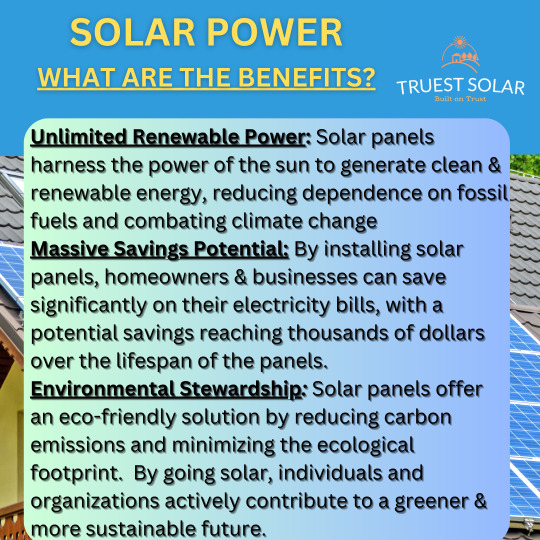
🌞 Renewable energy sources 🌞 Reduces electricity bills 🌞 Diverse applications 🌞 Low maintenance costs 🌞 Technology development
#solarenergy#solar#solarpower#solarpanels#renewableenergy#greenenergy#energy#cleanenergy#solarpanel#solarsystem#gogreen#gosolar#sustainability#energiasolar#solarpv#solarpowered#renewables#solarinstallation#sun#renewable#energia#environment#electricity#ecofriendly#sustainableenergy#climatechange#sunpower
2 notes
·
View notes
Text
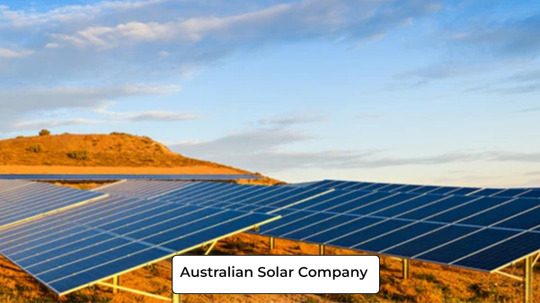
#solarenergy#solar#solarpower#solarpanels#renewableenergy#greenenergy#energy#cleanenergy#solarpanel#solarsystem#gosolar#energiasolar#solarpv#solarpowered#solarinstallation#sun#renewable#ecofriendly#sunpower
2 notes
·
View notes
Text
🌞🔋 Solares Energies| Solare Panel Systems 🌍💚
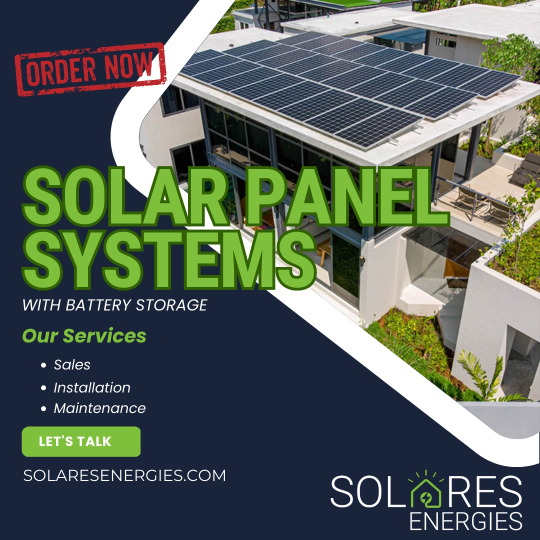
🌞🔋 Solares Energies | Solare Panel Systems 🌍💚
Are you ready to make a positive impact on our planet? At Solares Energies, we're committed to helping you harness the limitless power of the sun with our high-quality Solar Panel Systems and Battery Storage solutions. ☀️🏡
✅ Efficient, eco-friendly energy
✅ Significant savings on electricity bills
✅ Customized solutions for your home or business
✅ 24/7 monitoring and support
Why wait to make the switch? Join the clean energy revolution today and let Solares Energies light up your world! 🌟
Visit our website https://solaresenergies.com/services/solar-panels/
For more information or to request a free quote. Don't forget to follow us for the latest updates and promotions! 📲💻
#SolaresEnergies #SolarPower #BatteryStorage #Sustainability #RenewableEnergy #GoGreen #SaveMoney #CleanEnergyFuture
4 notes
·
View notes
Text
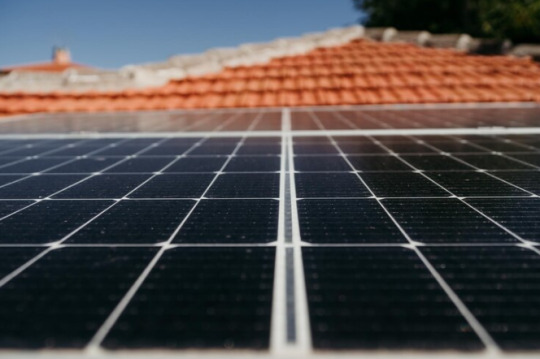
Solar installation at home and panel removal and reinstallations
Solar Installation at Home
1. Assess Your Energy Needs
Calculate your household’s energy consumption to determine the size of the solar system you'll need. Check your utility bills to see your average monthly and annual energy usage.
2. Evaluate Your Home’s Solar Potential
Consider factors such as roof orientation, tilt, shading, and available space. An installer will typically perform a site assessment to determine if your home is suitable for solar panels.
3. Choose the Right Solar System
Grid-Tied Systems: These are connected to the local utility grid and are the most common. They allow you to use grid power when solar production is low and can potentially earn credits through net metering.
Off-Grid Systems: Ideal for remote locations, these systems are not connected to the utility grid and require battery storage.
Hybrid Systems: Combine elements of both grid-tied and off-grid systems, with battery storage to provide backup power.
4. Select a Reputable Installer
Research and compare solar installation companies. Look for certifications, customer reviews, and warranties. Get multiple quotes and ask for detailed proposals.
5. Permits and Approvals
Obtain necessary permits and approvals from local authorities and your utility company. Your installer usually handles this, but it's good to be aware of the requirements.
6. Installation
The installation process typically involves mounting the panels on your roof, wiring them to an inverter, and connecting the system to your home’s electrical system. It usually takes one to three days.
7. Inspection and Activation
After installation, your system will need to be inspected by local authorities and your utility company. Once approved, your system can be activated.
Panel Removal and Reinstallation
1. Reasons for Removal
You might need to remove panels for roof repairs, upgrades, or relocation. Ensure that the removal process is done carefully to avoid damage.
2. Hire Professionals
Removing and reinstalling solar panels should be handled by professionals. They have the expertise to safely disconnect, handle, and reinstall the panels.
3. Roof and System Inspection
Before reinstallation, inspect the roof for any damage and ensure that it’s structurally sound. Also, check the solar system components to ensure they are in good condition.
4. Reinstallation Process
Reinstallation involves re-mounting the panels, reconnecting the wiring, and ensuring the system is properly calibrated and functional.
5. Testing and Activation
Once reinstalled, the system should be tested to ensure everything is working correctly. This includes checking the inverter, connections, and overall performance.
6. Documentation and Updates
Update any system documentation and inform your utility company of the changes, if necessary. This helps ensure your system continues to operate efficiently and in compliance with any agreements.
Additional Tips
Maintenance: Regularly clean your panels and check for any issues. Most systems require minimal maintenance, but it's important to stay on top of it to ensure optimal performance.
Warranty: Keep track of your system’s warranty coverage. Most solar panels come with a 25-year warranty, but other components may have different durations.
Energy Monitoring: Consider installing an energy monitoring system to keep track of your solar energy production and consumption.
If you have specific questions or need more detailed advice, feel free to ask!
#SolarEnergy#RenewableEnergy#GoSolar#CleanEnergy#SolarPower#Sustainability#GreenEnergy#SolarPanel#EnergyEfficiency#SolarInstallation#SaveEnergy#SolarPanels#SolarPV#ClimateAction#SolarSystem#SolarSolutions#SolarElectric#CleanTech#SolarInnovation#HomeSolar
2 notes
·
View notes
Text
Business sustainability means running a business without bringing potential harm to the environment, economy, and society, and this approach to running operations has to be set to work for the long term.
#businesssustainability#ecofriendly#sustainable#solar#panel#solarenergy#solarsystem#solarpower#solarpanel#panelsolar#solarpanels#solarpowered#solarlife#solarvic#solarnsw#offgridlife
5 notes
·
View notes
Text
#solarpanel#solarenergy#solar#solarpower#solarpanels#renewableenergy#solarsystem#greenenergy#cleanenergy#solarpowered#energy#solarpv#solarinstallation#renewables#renewable#environment#inverter#sun#sustainableenergy#energiasolar#electricity
2 notes
·
View notes
Photo
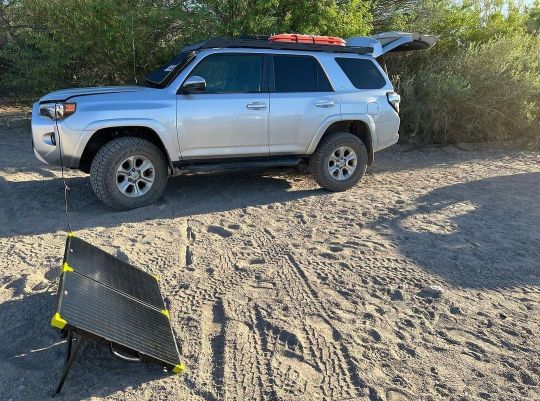
When I’m camping with the vehicle fridge, I take my @gorichsolar Mega 100 Watt Briefcase Portable Solar Charging Kit to keep my refrigerator, vehicle battery and other electronics going over the weekend with zero issues and couldn’t ask for a better panel. If you’re considering a brief case style solar panel, rigid panel for the ground or roof rack, a flexible solar panel to move and secure where you want it or for power stations, they’ve got it. I’m looking to buy one of their power stations and 100-200W rigid panel to mount on my @spidernodrillroofrack roof rack as upgrades to my camping, off-roading and bug out capabilities in addition to power outages from blackouts from summer heat, winds or natural disasters. #gorichsolar #richsolar #solar #solarenergy #solarpower #gogreen #solarpanel #solarpanels #offgrid #offgridliving #selfreliance #briefcasesolarpanel #offgridsolar #offroading #camping #campinglife #4runner #4runnernation #bushcraftandprepping #spidernodrillroofrack https://www.instagram.com/p/Cos5ySvPXH9/?igshid=NGJjMDIxMWI=
#gorichsolar#richsolar#solar#solarenergy#solarpower#gogreen#solarpanel#solarpanels#offgrid#offgridliving#selfreliance#briefcasesolarpanel#offgridsolar#offroading#camping#campinglife#4runner#4runnernation#bushcraftandprepping#spidernodrillroofrack
4 notes
·
View notes
Text
#dosolar#solarpanelsmelbourne#affordable5kwsolarsystempricevictoria#accoupledbatteryreservoir#6.6kwsolarpanelniddrie#solar power#solar energy#solarpanels#solar panels#solar panel#affordable5kwsolarsystempricespringvale#affordablesolarinverterofficer#affordablesolarpanelforhomes#affordable6kwsolarsystemclyde#buy6.6kwsolarsystemvictoria#buy 6.6 kw solarsystemvictoria#solar system#solar#accoupledbatterybundoora#australia#bestqualitysolarpanelsbundoora#bestsolarpanelcompany#bestsolarservicemelbourne#bestsolarsystem#solarbattery
0 notes
Text
Sustainable Living: Integrating Solar Energy into Your Home
Embracing renewable energy is a key step toward sustainable living, and solar energy stands at the forefront of this movement. Homeowners around the globe are harnessing the power of the sun, reducing carbon footprints, and enjoying the economic benefits of solar power. This article delves into the practicalities of integrating solar energy into your home, covering the essentials and the transformative impact it can have on how we live and power our daily lives.
Understanding Solar Energy
Solar energy is captured through photovoltaic (PV) cells that convert sunlight directly into electricity. These cells are assembled into panels, which can be installed on rooftops or in open land areas. When sunlight hits the PV cells, it triggers a flow of electrons, generating direct current (DC) electricity, which is then converted to alternating current (AC) for home use via an inverter.
Assessing Your Solar Potential
Before investing in solar technology, it's crucial to evaluate your home's solar potential. This depends on geographic location, roof orientation, shading from trees or buildings, and local weather conditions. Tools like Google's Project Sunroof or consultations with solar energy providers can offer insights into how much sunlight your rooftop can capture and convert.
Choosing the Right System
There's a range of solar panel systems available, from grid-tied setups that allow you to sell excess power back to the grid, to off-grid systems with battery storage for energy independence. Your choice will hinge on your energy goals, location, and financial considerations. Additionally, solar thermal systems can provide hot water or support heating systems, further reducing reliance on conventional energy sources.
Financial Considerations and Incentives
The initial cost of solar panel installation can be significant, but numerous government incentives, tax breaks, and rebates exist to make it more affordable. Over time, solar panels can pay for themselves through reduced electricity bills. Financing options like solar leases or power purchase agreements (PPAs) can also help homeowners adopt solar energy with little to no upfront costs.
Installation and Maintenance
Professional installation ensures optimal system performance and complies with local codes and regulations. Post-installation, solar panels require minimal maintenance, typically needing only occasional cleaning and checks to ensure no debris or damage. Most solar panels come with long-term warranties, reassuring homeowners of their durability and efficiency.
Environmental Impact
Integrating solar energy into your home is a positive step for the environment. It reduces reliance on fossil fuels, curtails greenhouse gas emissions, and contributes to a decrease in air pollution. As residential solar energy use grows, it aids in the collective effort to combat climate change and promotes a healthier planet.
Looking Ahead
Solar energy technology continues to advance, with improvements in efficiency, aesthetics, and integration with smart home technologies. As battery storage solutions become more affordable, the ability to store and manage energy will revolutionize home solar systems. By integrating solar energy into your home today, you're not just saving on costs but also investing in a sustainable future and joining the vanguard of the renewable energy revolution.
#solarpanels#solar#solarenergy#photovoltaics#solartechnology#renewables#sustainability#greenenergy#cleanenergy#residentialsolar
3 notes
·
View notes